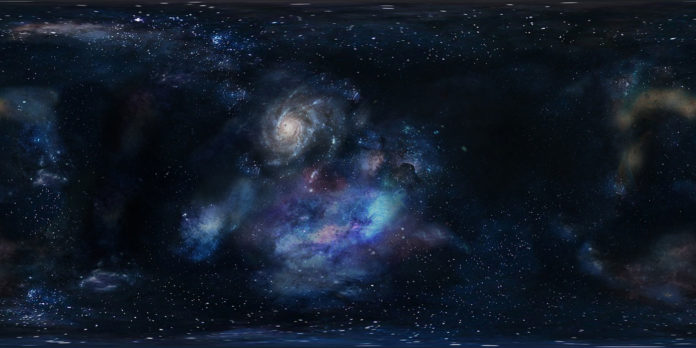According to a new study by the Ohio State University Center for Cosmology and AstroParticle Physics, the universe is getting hot, hot, hot. The study examined the thermal history of the universe over the last 10 billion years. It found that gas’s mean temperature across the universe has increased more than ten times throughout that time. It has reached around 2 million degrees Kelvin, today—roughly 4 million degrees Fahrenheit.
Yi-Kuan Chiang, the lead author of the study and a research fellow at The Ohio State University Center for Cosmology and Astroparticle Physics, said, “Our new measurement provides a direct confirmation of the seminal work by Jim Peebles—the 2019 Nobel Laureate in Physics—who laid out the theory of how the large-scale structure forms in the universe.”
“As the universe evolves, gravity pulls dark matter and gas in space together into galaxies and clusters of galaxies. The drag is violent—so violent that more and more gas is shocked and heated up.”
For this study, scientists used a new method to measure the gas’s temperature farther away from Earth. They then compared those measurements to gases closer to Earth and near the present time.
Chiang said, “Now, Scientists have confirmed that the universe is getting hotter over time due to the gravitational collapse of cosmic structure, and the heating will likely continue.”
Later, using data gathered from two missions, Planck and the Sloan Digital Sky Survey, scientists understood how the universe’s temperature has changed over time.
After combining the data from the two missions, scientists gauged the hot gases’ distances near and far via measuring redshift. A redshift is a notion used by astrophysicists to estimate the cosmic age at which distant objects are observed.
Here, the concept of redshift works because the light we see from objects farther away from Earth is older than the light we see from objects closer to Earth—the light from distant objects has traveled a long journey to reach us. That fact, along with estimating temperature from light, allowed scientists to measure the mean temperature of gases in the early universe—gases that surround objects farther away—and compare that means with the mean temperature of gases closer to Earth—gases today.
Chiang said, “The universe is warming because of the natural process of galaxy and structure formation. It is unrelated to the warming on Earth. These phenomena are happening on very different scales. They are not at all connected.”
Journal Reference:
- Yi-Kuan Chiang et al., The Cosmic Thermal History Probed by Sunyaev–Zeldovich Effect Tomography, The Astrophysical Journal (2020). DOI: 10.3847/1538-4357/abb403
